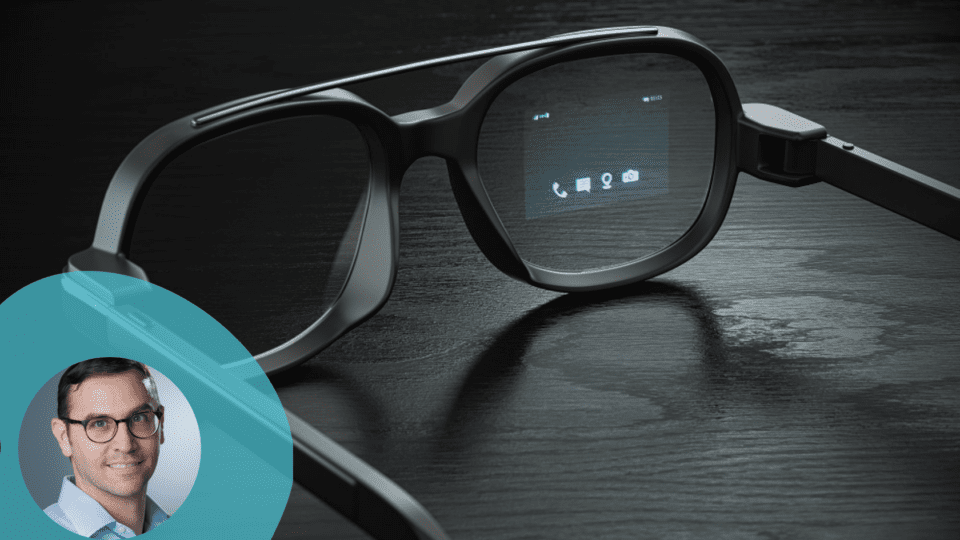The incoming adoption of augmented reality (AR) glasses has the potential to transform life as we know it — and that includes physical retail. Augmented reality is set to make the brick-and-mortar experience more personalized, immersive and efficient for retailers and shoppers alike — transforming how we buy, pay and shop.
It’s no secret that innovations in technology have largely been reserved for online shopping and ecommerce. Although slower to innovate by nature, physical retail is now beginning to change significantly thanks to new digital forms of payment, such as Google Pay or Apple Pay, and cutting-edge AV experiences made possible with interactive displays and immersive audio.
But innovation in physical retail — for shoppers, businesses and tech companies — is about to be expedited. Once adopted by the mainstream, augmented reality glasses will truly combine the digital and physical shopping experiences to create an entirely new reality.
For example, with augmented reality glasses, retailers will personalize recommendations, similar to how we experience targeted online advertisements; shoppers will be able to pay for goods simply by looking at them; and much more.
Advertisement
Personalized, In-Person Immersion
Mainstream AR glasses adoption will lead to a more personalized shopping experience in-store. Like what we experience with several online retailers, AR glasses will make it possible for us to experience personalized recommendations in real time based on what we purchased at any vendor.
For example, if a shopper has purchased a certain backpack brand previously, AR can recognize that backpack brand when a shopper looks at it in-store. It can then provide product information or promotions, ultimately resulting in a more engaging and interactive shopping experience.
This also provides immense opportunity for retailers. AR glasses will help businesses create a new platform to upsell shoppers and make recommendations to add more items to a purchase. For example, if entering a Starbucks with AR glasses, the system could place enticing add-ons around a drink order, such as a breakfast sandwich, encouraging customers to buy a complementary pairing with their original purchase.
AR glasses also offer personalized customization beyond previous purchases. AR glasses will someday integrate with our personal calendars to make recommendations on purchases based on upcoming trips or events. For example, a shopper’s Google AR glasses may see on their Google calendar that you have an upcoming wedding, and recommend that they look at a tie in a retail store that may be ideal for that event.
The idea of expanding a physical footprint digitally also offers immense benefits for retailers that may be restricted on square footage. By utilizing a new digital reality made possible through AR, retailers can display virtual storefronts in physical retail locations. This would allow businesses to display a much larger selection of products than they would be able to physically show, eliminating the physical size restraint of a storefront. Plus, shoppers could indulge in a more immersive experience regardless of physical space, such as the ability to try on virtual clothing.
Payment in the Blink of an Eye
Mobile payments are already becoming prevalent in brick-and-mortar retail. With AR glasses, this will be taken a step further: shoppers will be able to make hands-free, contactless payments without having to take out their wallets or phones. Wearers will be able to make purchases by looking at a product with their AR glasses on and using their stored payment information, significantly streamlining the purchasing experience.
So, in the not-so-distant future, wearers will be able to shop without needing to bring cash or credit cards. They can also leave their phones behind, since AR glasses will store all the necessary payment information. By removing these physical barriers, shoppers can enjoy a more fluid, streamlined shopping experience.
Contactless payments will first be made possible with LIDAR codes, a technology that enables AR glasses to create accurate and fast 3D representations of close-range objects and environments. Technology companies like Google, Amazon and Apple already have the retail partners (via Google Pay, Apple Pay, and Amazon Pay) to add their own QR codes that may be easily read by AR glasses.
For example, we could walk into a grocery store with ‘Apple Glasses’ on, look at a bag of pretzels, and say: “Hey Siri, I will take that.” A code next to pretzels — seen within AR — will be flagged by LIDAR on the front of the AR glasses. Then, the entire transaction will take place without having to take your wallet or phone out of your pocket, offering a completely frictionless experience. And Apple will receive a cut of the transaction.
Looking Ahead for Retail
AR has the potential to transform how and why we make payments and buy certain items, simplifying processes and virtually eliminating the need to take out our wallets. This experience will benefit shoppers by making the shopping experience more seamless and interactive, while also offering retailers more ways to engage their customer base.
Ari Grobman is CEO of Lumus.









